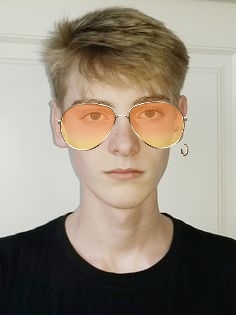一、实时采集人脸并绘点
1、代码
打开摄像头,实时采集人脸并保存、绘制68个特征点
import cv2
import dlib
import os
import sys
import random
# 存储位置
output_dir = 'D:/631907060115'
size = 64
if not os.path.exists(output_dir):
os.makedirs(output_dir)
# 改变图片的亮度与对比度
def relight(img, light=1, bias=0):
w = img.shape[1]
h = img.shape[0]
#image = []
for i in range(0,w):
for j in range(0,h):
for c in range(3):
tmp = int(img[j,i,c]*light + bias)
if tmp > 255:
tmp = 255
elif tmp < 0:
tmp = 0
img[j,i,c] = tmp
return img
#使用dlib自带的frontal_face_detector作为我们的特征提取器
detector = dlib.get_frontal_face_detector()
# 打开摄像头 参数为输入流,可以为摄像头或视频文件
camera = cv2.VideoCapture(0)
index = 1
while True:
if (index <= 20):#存储20张人脸特征图像
print('Being processed picture %s' % index)
# 从摄像头读取照片
success, img = camera.read()
# 转为灰度图片
gray_img = cv2.cvtColor(img, cv2.COLOR_BGR2GRAY)
# 使用detector进行人脸检测
dets = detector(gray_img, 1)
for i, d in enumerate(dets):
x1 = d.top() if d.top() > 0 else 0
y1 = d.bottom() if d.bottom() > 0 else 0
x2 = d.left() if d.left() > 0 else 0
y2 = d.right() if d.right() > 0 else 0
face = img[x1:y1,x2:y2]
# 调整图片的对比度与亮度, 对比度与亮度值都取随机数,这样能增加样本的多样性
face = relight(face, random.uniform(0.5, 1.5), random.randint(-50, 50))
face = cv2.resize(face, (size,size))
cv2.imshow('image', face)
cv2.imwrite(output_dir+'/'+str(index)+'.jpg', face)
index += 1
key = cv2.waitKey(30) & 0xff
if key == 27:
break
else:
print('Finished!')
# 释放摄像头 release camera
camera.release()
# 删除建立的窗口 delete all the windows
cv2.destroyAllWindows()
break
2、结果

二、人脸虚拟P上一付墨镜
1、代码
# -*- coding: utf-8 -*-
"""
Created on Fri Nov 12 17:21:36 2021
@author: 春风浅作序
"""
import dlib
from PIL import Image, ImageDraw, ImageFont
import random
import cv2
from imutils.video import VideoStream
from imutils import face_utils, translate, rotate, resize
import numpy as np
vs = VideoStream().start()
detector = dlib.get_frontal_face_detector()
predictor = dlib.shape_predictor("E:/face/shape_predictor_68_face_landmarks.dat")
max_width = 500
frame = vs.read()
frame = resize(frame, width=max_width)
fps = vs.stream.get(cv2.CAP_PROP_FPS) # need this for animating proper duration
animation_length = fps * 5
current_animation = 0
glasses_on = fps * 3
# uncomment for fullscreen, remember 'q' to quit
# cv2.namedWindow('deal generator', cv2.WND_PROP_FULLSCREEN)
#cv2.setWindowProperty('deal generator', cv2.WND_PROP_FULLSCREEN,
# cv2.WINDOW_FULLSCREEN)
deal = Image.open("D:/631907060115/glasses.png")
text = Image.open('D:/631907060115/renlian.jpg')
dealing = False
number =0
while True:
frame = vs.read()
frame = resize(frame, width=max_width)
img_gray = cv2.cvtColor(frame, cv2.COLOR_BGR2GRAY)
faces = []
rects = detector(img_gray, 0)
img = Image.fromarray(cv2.cvtColor(frame, cv2.COLOR_BGR2RGB))
# print(rects)
for rect in rects:
face = {}
shades_width = rect.right() - rect.left()
# predictor used to detect orientation in place where current face is
shape = predictor(img_gray, rect)
shape = face_utils.shape_to_np(shape)
# grab the outlines of each eye from the input image
leftEye = shape[36:42]
rightEye = shape[42:48]
# compute the center of mass for each eye
leftEyeCenter = leftEye.mean(axis=0).astype("int")
rightEyeCenter = rightEye.mean(axis=0).astype("int")
# compute the angle between the eye centroids
dY = leftEyeCenter[1] - rightEyeCenter[1]
dX = leftEyeCenter[0] - rightEyeCenter[0]
angle = np.rad2deg(np.arctan2(dY, dX))
# print((shades_width, int(shades_width * deal.size[1] / deal.size[0])))
# 图片重写
current_deal = deal.resize((shades_width, int(shades_width * deal.size[1] / deal.size[0])),
resample=Image.LANCZOS)
current_deal = current_deal.rotate(angle, expand=True)
current_deal = current_deal.transpose(Image.FLIP_TOP_BOTTOM)
face['glasses_image'] = current_deal
left_eye_x = leftEye[0,0] - shades_width // 4
left_eye_y = leftEye[0,1] - shades_width // 6
face['final_pos'] = (left_eye_x, left_eye_y)
# I got lazy, didn't want to bother with transparent pngs in opencv
# this is probably slower than it should be
# 图片动画以及配置
if dealing:
# print("current_y",int(current_animation / glasses_on * left_eye_y))
if current_animation < glasses_on:
current_y = int(current_animation / glasses_on * left_eye_y)
img.paste(current_deal, (left_eye_x, current_y-20), current_deal)
else:
img.paste(current_deal, (left_eye_x, left_eye_y-20), current_deal)
# img.paste(text, (75, img.height // 2 - 52), text)
# 起初动画配置
if dealing:
current_animation += 1
frame = cv2.cvtColor(np.asarray(img), cv2.COLOR_RGB2BGR)
# 按键选择
cv2.imshow("deal generator", frame)
key = cv2.waitKey(1) & 0xFF
#退出程序
if key == ord("q"):
break
# 开始程序
if key == ord("d"):
dealing = not dealing
# 图片切换
if key == ord("c"):
# 让图片从上面重新开始
# current_animation = 0
number = str(random.randint(0, 8))
print(number)
deal = Image.open("'D:/631907060115/'"+number+".png")
cv2.destroyAllWindows()
vs.stop()
2、结果

三、总结
本次实验初步了解了人脸识别的原理以及实现,采集面貌,将这些面像文件生成面纹编码贮存起来。收获较多。





















 3300
3300











 被折叠的 条评论
为什么被折叠?
被折叠的 条评论
为什么被折叠?








